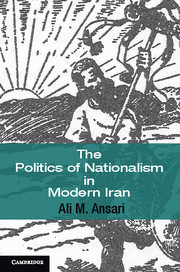Preface
Published online by Cambridge University Press: 05 November 2012
Summary
A central feature of this study is to assess the complex relationship between ‘history’ and ‘myth’, and how they had fed into and helped define the idea of Iran and Iranian nationalism during the course of more than a century. Partly to reflect the complexity of the conceptual relationship I have avoided fixing analytic definitions which may serve to effectively prejudge the argument, but also give the impression of clarity which in practice rarely existed. At the same time, it will be of undoubted benefit to the reader if some frame of reference is outlined as well as some of the more important sources for the ideas and approach applied in the text. Readers who are interested are encouraged to peruse both the bibliography and the footnotes which detail my intellectual influences, but for immediate purposes, the ‘metanarrative’ of this text is informed by the works of Gramsci, Ricoeur, and John B Thompson for the operation of culture, ideas, and ideology; on Anderson and Smith, for my understanding of nationalism; and on Pocock and Israel for the development of the European Enlightenment.
With respect to terminology, the study of ideas and ideology enjoys a characteristically rich vocabulary reflecting perhaps the richness of the debate and the important nuances which exist. In this text I have drawn on a variety of terms partly to reflect this nuance but also to relieve the reader of the tedium of reiteration. The application of the term ‘myth’ is drawn from a number of writers including Barthes, and is used as he defines it, in the sense of a ‘story’, or alternatively a ‘narrative’. Political myths and grand narratives are used in the sense conveyed by the Persian term ostureh, historical myths shaped to serve political ends and to help feed world-views and cultural outlooks.
- Type
- Chapter
- Information
- The Politics of Nationalism in Modern Iran , pp. ix - xPublisher: Cambridge University PressPrint publication year: 2012

